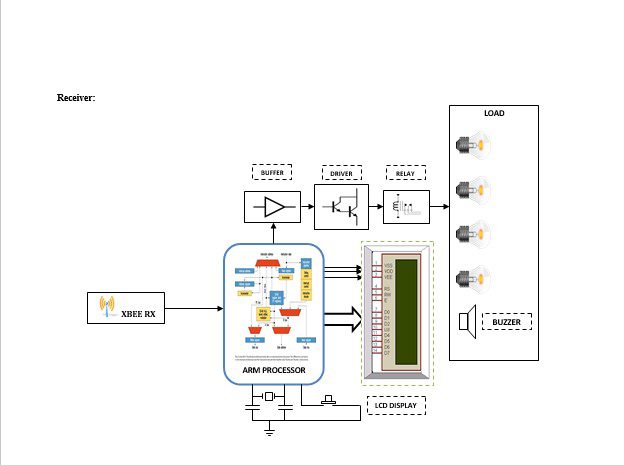Table of Contents
Introduction:


Home security is one of the essential requirements for everyone nowadays due to the high rate of crimes. People are intended to take certain measures to detect and prevent this intrusion. A smart home based upon WSN deploys sensors around some places in the house to provide precise monitoring. This provides a cost-effective solution to detect intrusion and prevent burglary at the owner’s home in his absence. This provides a convenient and safe environment for the owner. In addition, the implementation of a wired system is error-prone, costly, time-consuming, and uses more power. These shortcomings may be prevented by replacing traditional wired networks with WSN technology.
This project evaluates the development of a Low-cost security system using a small PIR (Pyroelectric Infrared) sensor built around a microcontroller. The low-power PIR detectors take advantage of pyroelectricity to detect a human body that is a constant source of Passive Infrared (radiation in the infrared region). The system senses the signal generated by the PIR sensor detecting the presence of individuals not at thermal equilibrium with the surrounding environment. Detecting the presence of any unauthorized person in any specific time interval triggers an alarm. This highly reactive approach has low computational requirements, therefore it is well-suited to surveillance, industrial applications, and smart environments.




Block diagram explanation
Power supply unit
This section needs two voltages viz., +12 V & +5 V, as working voltages. Hence specially designed power supply is constructed to get regulated power supplies.
Passive infrared sensor (PIR sensor)
A passive infrared sensor (PIR sensor) is an electronic sensor that measures infrared (IR) light radiating from objects in its field of view. They are most often used in PIR-based motion detectors.
Operating principle:
All objects with a temperature of absolute zero emit heat energy in the form of radiation. Usually, this radiation is invisible to the human eye because it radiates at infrared wavelengths, but it can be detected by electronic devices designed for such a purpose.
PIR-based motion detector
A PIR-based motion detector is used to sense the movement of people, animals, or other objects. They are commonly used in burglar alarms and automatically-activated lighting systems. They are commonly called simply “PIR”, or sometimes “PID”, for “passive infrared detector”.
ARM processor
ARM is a computer processor-based RISC architecture. A RISC-based computer design approach means ARM processors require significantly fewer transistors than typical processors in average computers. This approach reduces costs, heat, and power use. The low power consumption of ARM processors has made them very popular:
The ARM architecture (32-bit) is the most widely used in mobile devices, and the most popular 32-bit one in embedded systems.
Buffers
Buffers do not affect the logical state of a digital signal (i.e. a logic 1 input results in a logic 1 output whereas logic 0 input results in a logic 0 output). Buffers are normally used to provide extra current drive at the output but can also be used to regularize the logic present at an interface
Drivers
This section is used to drive the relay where the output is the complement of input which is applied to the drive but the current will be amplified.
Relays
It is an electromagnetic device that is used to drive the load connected across the relay and the o/p of the relay can be connected to the controller or load for further processing.
Zigbee Technology
ZigBee is a specification for a suite of high-level communication protocols used to create personal area networks built from small, low-power digital radios. ZigBee is based on an IEEE 802.15 standard. Though low-powered, ZigBee devices can transmit data over long distances by passing data through intermediate devices to reach more distant ones, creating a mesh network.
Buzzer:
A buzzer or beeper is an audio signaling device, which may be mechanical, electromechanical, or piezoelectric. Typical uses of buzzers and beepers include alarm devices, timers, and confirmation of user input such as a mouse click or keystroke.
Methodology:
This project is developed to provide security for the industries and home and Depending on the sensor signal the light and buzzer will be turned on to indicate some person is there near the transmitter. The main modules in this project are the Human detecting Sensor, an ARM controller unit with LCD, and Zigbee.
The transmitter will be there near the gate or door or in the garden or restricted areas and the receiver will be there at the Home or Office. The transmitter module has Human Detecting Sensor as an input, the sensor here used is the PIR sensor, which is used to detect persons. If the PIR sensor got input means that indicates the person has been detected, and that sensed signal will be sent to the ARM controller, then the ARM controller analyses the signal and indicates the person has arrived via LCD. And the same information will be transmitted to the receiver via Zigbee and will be displayed on the receiver LCD Corresponding lights will be turned and the buzzer also will be turned ON to indicate that some person has arrived near the transmitter and the owner has to take some actions. Then the owner will take appropriate action based on the information received at the receiver end.
Advantages:
- Home security systems are great for home protection that ensure the safety of your valuables and loved ones.
- Many people think that a security system is all about an alarm that might trigger when someone intrudes. But a well-designed home security system cannot be tampered with easily.
- Home security systems are very easy to install. They can be monitored within 24 hours of the installation. This service has helped many people to save their lives and valuables.
- User-friendly feature.
- The best advantage of installing home security systems is that thieves will not target your house because they know that once the alarm is activated, the cops will be at your house within minutes.
- Checking with your insurance company may be an advantage as well. wireless home security alarm is that there is always a small chance that they may be remotely hacked and the intruder will find the security code embedded inside the key fob.
Disadvantages:
- One-time investment cost.
- It has to be planted throughout the area.
Applications:
- This project can be implemented to provide security to Homes, Schools, Colleges, etc…
- Restricted zones.
- Wherever security is important there we can implement this project.




